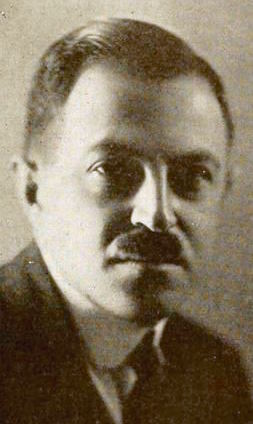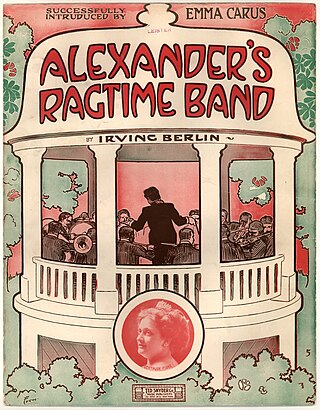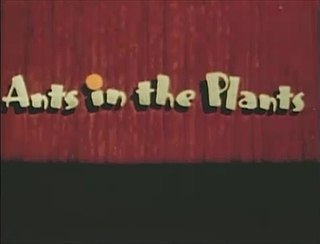Related Research Articles

Animation is a filmmaking technique by which still images are manipulated to create moving images. In traditional animation, images are drawn or painted by hand on transparent celluloid sheets (cels) to be photographed and exhibited on film. Animation has been recognized as an artistic medium, specifically within the entertainment industry. Many animations are computer animations made with computer-generated imagery (CGI). Stop motion animation, in particular claymation, has continued to exist alongside these other forms.
The golden age of American animation was a period in the history of U.S. animation that began with the popularization of sound synchronized cartoons in 1928, began to decline around 1957, and ended by 1969, when theatrical animated shorts started to lose popularity to the newer medium of television. Animated media from after the Golden Age were produced on cheaper budgets and with more limited animation techniques by companies such as Terrytoons, UPA, Famous Studios, Jay Ward Productions, Hanna-Barbera, DePatie-Freleng Enterprises, Rankin/Bass and Filmation. In artefact, the history of animation became very important in the United States.

Fleischer Studios was an American animation studio founded in 1929 by brothers Max and Dave Fleischer, who ran the pioneering company from its inception until its acquisition by Paramount Pictures, the parent company and the distributor of its films. In its prime, Fleischer Studios was a premier producer of animated cartoons for theaters, with Walt Disney Productions being its chief competitor in the 1930s.

Max Fleischer was a Polish-American animator, inventor, film director and producer, and studio founder and owner. Born in Kraków, Poland, Fleischer immigrated to the United States where he became a pioneer in the development of the animated cartoon and served as the head of Fleischer Studios, which he co-founded with his younger brother Dave. He brought such comic characters as Koko the Clown, Betty Boop, Popeye, and Superman to the movie screen, and was responsible for several technological innovations, including the rotoscope, the "follow the bouncing ball" technique pioneered in the Ko-Ko Song Car-Tunes films, and the "stereoptical process". Film director Richard Fleischer was his son.

Betty Boop is an animated cartoon character designed by Grim Natwick at the request of Max Fleischer. She originally appeared in the Talkartoon and Betty Boop film series, which were produced by Fleischer Studios and released by Paramount Pictures. She was featured in 90 theatrical cartoons between 1930 and 1939. She has also been featured in comic strips and mass merchandising.

Talkartoons is a series of 42 animated cartoons produced by Fleischer Studios and distributed by Paramount Pictures between 1929 and 1932.

Koko the Clown is an animated cartoon character created by Max Fleischer. He first appeared as the main protagonist in Out of the Inkwell (1918–1929), a major animated series of the silent era. Throughout the series, he goes on many adventures with his canine companion "Fitz the Dog", who would later evolve into Bimbo in the Betty Boop cartoons.

The Fleischer Superman cartoons are a series of seventeen animated superhero short films released in Technicolor by Paramount Pictures and based upon the comic book character Superman, making them his first animated appearance.
Dave Fleischer was an American film director and producer who co-owned Fleischer Studios with his older brother Max Fleischer. He was a native of New York City.

Aladdin and His Wonderful Lamp is a two-reel animated cartoon short subject in the Popeye Color Specials series, produced in Technicolor and released to theaters on April 7, 1939, by Paramount Pictures. It was produced by Max Fleischer, and directed by Dave Fleischer for Fleischer Studios, Inc., with David Tendlar serving as head animator, and music being supervised by Sammy Timberg. The voice of Popeye is performed by Jack Mercer, with additional voices by Margie Hines as Olive Oyl and Carl Meyer as the evil Wazzir.

U.M. & M. TV Corporation was an American media company best known as the original purchaser of the pre-October 1950 short films and cartoons produced by Paramount Pictures, excluding Popeye and Superman. The initials stand for United Film Service, MTA TV of New Orleans, and Minot T.V.

Screen Songs are a series of animated cartoons produced at the Fleischer Studios and distributed by Paramount Pictures between 1929 and 1938. Paramount brought back the sing-along cartoons in 1945, now in color, and released them regularly through 1951. Two of Paramount's one-shot cartoons quietly revived the format later: Candy Cabaret (1954) and Hobo's Holiday (1963).

Gulliver's Travels is a 1939 American animated musical fantasy film produced by Max Fleischer and directed by Dave Fleischer for Fleischer Studios. Released to cinemas in the United States on December 22, 1939, by Paramount Pictures, the story is a very loose adaptation of Jonathan Swift's 1726 novel of the same name, specifically only the first part of four, which tells the story of Lilliput and Blefuscu, and centers around an explorer who helps a small kingdom who declared war after an argument over a wedding song. The film was Fleischer Studios' first feature-length animated film, as well as the second animated feature film produced by an American studio after Walt Disney Productions' Snow White and the Seven Dwarfs, as Paramount had commissioned the feature in response to the success of that film. The sequences for the film were directed by Seymour Kneitel, Willard Bowsky, Tom Palmer, Grim Natwick, William Henning, Roland Crandall, Thomas Johnson, Robert Leffingwell, Frank Kelling, Winfield Hoskins, and Orestes Calpini.
Out of the Inkwell is a 1938 Max Fleischer/Betty Boop live-action and animated short film. The title and concept for the film were a tribute to the Out of the Inkwell series of films that Max Fleischer had produced during the 1920s.

Christmas Comes But Once a Year is a 1936 animated short produced by Fleischer Studios and released on December 4, 1936 by Paramount Pictures. It is part of the Color Classics series. The cartoon features Professor Grampy, a character from the Betty Boop series; this is the character's only appearance without Betty. An edited version was featured during the Pee-wee's Playhouse Christmas Special in 1988, as the featured short shown by the King of Cartoons.
This is a list of the 122 cartoons of the Popeye the Sailor film series produced by Famous Studios for Paramount Pictures from 1942 to 1957, with 14 in black-and-white and 108 in color. These cartoons were produced after Paramount took ownership of Fleischer Studios, which originated the Popeye series in 1933.
Granite Hotel is a 1940 American animated short film directed by Dave Fleischer. Released in April of that year, it was the fourth in the Stone Age Cartoons series. The film is now in public domain.
Animated Antics is an animated cartoon series produced by the Fleischer Studios from 1940 through 1941, and distributed through Paramount Pictures.

Ants in the Plants is a Technicolor cartoon created by Fleischer Studios and originally released into theaters on March 15, 1940, by Paramount Studios. It was produced by Max Fleischer and directed by Dave Fleischer; animators were Myron Waldman and George Moreno. Music for the cartoon was composed by Sammy Timberg. It was part of the Fleischer Studios series Color Classics produced by the studio between 1934 and 1941.
References
- ↑ Richard Fleischer (2005). Out of the inkwell: Max Fleischer and the animation revolution. University Press of Kentucky. ISBN 0813123550.
- ↑ Jeff Lenburg (2006). Who's who in animated cartoons: an international guide to film & television's award-winning and legendary animators . Hal Leonard Corporation. pp. 90. ISBN 1-55783-671-X.
Stone Age Cartoons, Paramount.
- ↑ Stuart B. McIver (1998). Dreamers, Schemers and Scalawags . Pineapple Press Inc. pp. 47. ISBN 1561641553.
Stone Age Cartoons, Paramount.
- ↑ Fred Grandinetti (2004). Popeye: an illustrated cultural history. McFarland. p. 46. ISBN 078641605X.
- ↑ Motion picture herald, Volume 139, Issues 1-6. Quigley Pub. Co. 1940. p. 53.
- ↑ Leslie Cabarga (1998). The Fleischer story. DaCapo Press. ISBN 0306803135.
- ↑ William C. Cline (1997). In the nick of time: motion picture sound serials. McFarland. pp. vii. ISBN 078640471X.
- 1 2 3 4 5 6 Motion Picture Copyright Registrations (1940-1949)
- ↑ Motion Picture Herald (January 1947)
- ↑ Motion Picture Herald (December 1946)
- 1 2 Motion Picture Copyright Registrations (1940-1949)